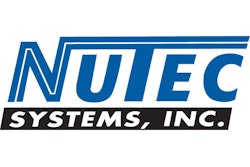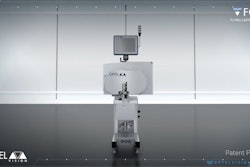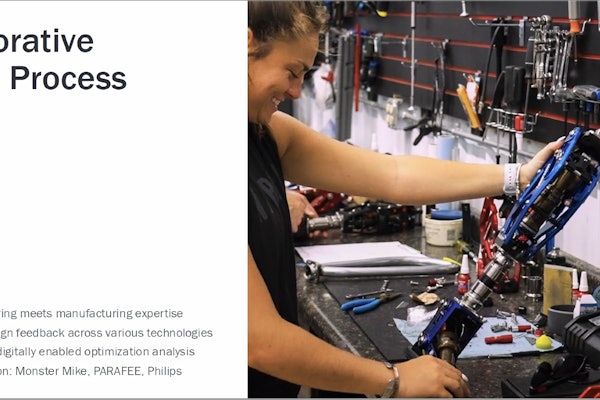
In some ways, it's like trying to turn a battleship. When the U.S. Food and Drug Administration (FDA) in August 2002 rolled out a significant new initiative known as “Pharmaceutical Current Good Manufacturing Practices (cGMPs) for the 21st Century: A Risk-Based Approach,” the Agency signaled a major change in direction. The approach contained several innovative concepts that the FDA believed would enhance and modernize the regulation of pharmaceutical manufacturing and product quality, and, by extension, the way that the pharmaceutical industry would operate.
Indeed, many believe that the methodologies laid out by the FDA—an approach that has now come to be known as Quality by Design, or QbD—have the potential to significantly cut costs and boost the strategic importance of manufacturing in the research and development (R&D)-intensive pharmaceutical industry.
But change comes slowly in pharmaceuticals, a $700 billion-plus global industry in which product development lifecycles can easily last from seven to 10 years. And while FDA regulators say that they have been pleased with the industry's progress to date, pundits agree that industry implementation of the new FDA approach is only still in its early stages.
For the pharmaceutical industry, QbD represents “a 180-degree different way of producing products than they've been used to,” contends John Avellanet, a biotech and pharmaceutical industry consultant whose firm specializes in quality systems and regulatory compliance issues. Consequently, he figures that full-fledged pharmaceutical industry understanding and adoption of the QbD methodology will require an additional 10 to 15 years. And for many of the industry's most tradition-bound participants, “it's going to be a struggle,” adds Avellanet, who is managing director and principal at Cerulean Associates LLC.
Slow turn
The QbD initiative comes as the pharmaceutical industry is facing numerous cost pressures, including growing competition from generics and over-the-counter drugs, expiring patents on many “blockbuster” drugs with fewer replacements in the R&D pipeline, and government and consumer pressures to make health care more affordable. So as “Battleship Pharmaceutical” continues its slow turn to a new way of doing business, the industry stands to benefit greatly from the use of QbD methodologies.
Among other things, “the cost of manufacturing over the lifecycle will decrease, because there will be less rejects, batch rejection, product recalls and [lower] cost of compliance,” says Dr. Moheb Nasr, director of the Office of New Drug Quality Assessment (ONDQA), Center for Drug Evaluation and Research (CDER), at the FDA. “There will also be cost savings in development, because based on Quality by Design, and using quality risk assessments, you will end up focusing your development on areas that are most critical to quality, safety, and efficacy, rather than focusing on everything equally.”
Other manufacturing savings will come through the use of automation, such as process analytical technology, or PAT, which will enable drug makers to move from batch manufacturing toward continuous manufacturing, Nasr continues. “That should speed up production, and eventually reduce the cost.”
Essentially, QbD requires that quality be built into a drug product from the beginning, based on a thorough and scientifically based understanding of so-called critical quality attributes (CQAs) of the product, as well as the critical process parameters (CPPs) that can affect variability of those attributes during the manufacturing process. With this information in place, the pharmaceutical industry can then turn to modern technologies that can measure and provide real-time control of those critical parameters during manufacturing. The QbD approach also supports continuous process improvement and the establishment of modern, risk-based quality management techniques.
This is a vastly different approach than that of the past, when manufacturing processes, once they were validated with the FDA, were essentially frozen in place. Quality control testing was done following production of a batch, and if changes were made to the process, FDA rules required a revalidation, which manufacturers saw as an expensive and time-consuming process.
As a result, critics say, change-averse pharmaceutical manufacturers have been slow to adopt modern manufacturing technologies and approaches such as PAT and continuous improvement methodologies that have been common for decades in other industries. Indeed, the use of Microsoft Excel spreadsheets and paper records is still common in the pharmaceutical industry. This has led to comparatively high levels of waste and manufacturing inefficiencies.
“Historically, [pharmaceutical] manufacturers have been very change-averse. They didn't want to mess with the process. They were almost forced to roll the dice on making the batches, and if a batch turned out good, they were happy, and if it turned out bad, typically they had to dump the batch,” observes Dennis McKinley, industry sales manager, Life Sciences, for automation vendor ABB.
Gimme space
But now, as noted by McKinley and others, QbD is beginning to change that mindset, in part through the use of a “design space” concept. “What QbD is doing is bringing a lot more analytical and process information together in the R&D phase, potentially widening out the size of the design space that companies have to work with, and allowing them a little more flexibility in the process when the product gets up to the manufacturing phase,” McKinley says.
Anjali Kataria agrees. “The new guidelines give leniency now to a new type of development manufacturing approach, which is to create a design space, and to identify all the parameters around that design space, so that you have a range that you're operating within, as opposed to a fixed point,” says Kataria, who is founder and former chief marketing officer at Conformia Inc., a Sunnyvale, CA-based provider of process and product lifecycle software for the pharmaceutical industry. Kataria left Conformia recently to form a not-for-profit organization that will aim to be a clearinghouse for best practices in drug and food quality leadership, of which QbD will be a central component, she says.
Kataria notes that the design space concept has been used previously in other industry sectors, such as semiconductors, to provide manufacturing flexibility while still maintaining quality. Now, with QbD, she says, it is being ported to pharmaceuticals.
With the design space concept, an out-of-specification parameter that would have triggered a regulatory change process in the past may now be acceptable, says Kataria. Manufacturing may continue, she says, “if you are in a range that was deemed appropriate and acceptable when you submitted your design space, because you're indicating you know how to control your process within this space.” The result is “a new way of operating on the manufacturing side, which does not create the need for a post-approval change process,” Kataria explains. “It enables you to keep manufacturing.”
The QbD approach is predicated on the use of scientific methods to identify and understand CQAs and CPPs that are critical to the quality of a drug product. And it also involves an understanding of those that do not have an impact. “If you can prove that a drug or biologic characteristic (such as an inactive ingredient like food coloring) has no impact on safety, efficacy, or quality, then you can decide not to bother testing, tracking or controlling it any further. Likewise, processes that have no impact on product safety, efficacy or quality can also receive minimal testing, tracking, and control. For most companies, this dramatically lowers the costs involved in product development and production,” says Cerulean's Avellanet, writing in a May 2008 paper titled, “Why Quality by Design?”
PAT splat
One reason that process analytical technology made a big splash in the pharmaceutical industry earlier in the decade—and then seemed to fall back in popularity—involved a lack of understanding of PAT and QbD concepts by pharmaceutical companies, Avellanet says.
As one in a series of QbD-related guidances, the FDA published, “PAT—A Framework for Innovative Pharmaceutical Development, Manufacturing, and Quality Assurance” in September 2004. At about the same time, the pharmaceutical industry was looking at Six Sigma as a way to lower manufacturing costs and improve quality, Avellanet says. When the PAT guidance came out, the industry saw a natural fit, he notes, “so they went out and bought a whole bunch of [PAT] automation and slapped it all in.”
The problem, says the consultant, was that much of the industry approached PAT without a strategic QbD model. “The way that PAT is set up is that it's continuously monitoring those things that you tell it to continuously monitor that are important. So if you haven't figured out ahead of time what parameters are important for your product, then that's going to be kind of a problem for you,” Avellanet says. As a result, when PAT results proved disappointing, he contends, “the whole love affair with PAT kind of went away for a while.”
Automation vendors acknowledge the issue. “When the FDA first came out with the PAT guidance, they basically sent everybody running to look at sensor technology, which is certainly one aspect of PAT, but there's a lot more to it than that,” observes Frank Offenbacher, global life sciences marketing manager for automation supplier Honeywell Process Solutions. “When PAT first came out, any supplier who could spell PAT started telling the market they had a PAT solution, and what really happened was that not everybody had that solution,” adds ABB's McKinley.
Pushing ahead
Nonetheless, vendors report that major pharmaceutical customers now are pushing ahead with PAT and other QbD methodologies, and are reporting some early success.
Honeywell provides a number of tools, including advanced control, multivariate analysis, modeling, and simulation that have been widely used in industries such as chemicals to support process understanding, says Offenbacher. Now, a number of pharmaceutical customers are adapting those tools to better understand their processes, he says. “Pretty much all of our [pharmaceutical] customers have some QbD/PAT initiatives internally.”
At Emerson Process Management, an automation supplier, Saroj Patnaik, director of life sciences, global solutions, reports that his company recently began providing a QbD-related project execution process that can significantly slash the time needed to put pharmaceutical manufacturing automation in place. Based on the ASTM E 2500 standard from the American Society for Testing and Materials, the approach provides a science and risk-based systematic approach for process verification, and can cut typical project time from 18 months to 12 months, according to Patnaik. This approach is “beginning to catch some market,” he says.
Emerson has also recently introduced new products and tools aimed at PAT support, Patnaik continues. One such tool is synTQ, from United Kingdom-based Optimal Industrial Automation Ltd. . Under an agreement with Optimal, this product is integrated in Emerson's DeltaV control system to provide adapters that enable interface to a range of third-party analyzers, Patnaik says.
Another tool is Quality Predictive Engine. It is a modeling package developed by Emerson in conjunction with the University of Texas that uses data gathered from PAT analyzers to predict in real time when a process will move out of specification. The package has the ability to enable continuous, real-time process corrections by the DeltaV controller. But so far, pharmaceutical customers who are working on PAT are still evaluating that option, Patnaik says.
Holy grail
At ABB, McKinley notes that the idea of closed-loop feedback enabling real-time automated process correction is the holy grail of PAT, as it would eliminate the need for end-of-batch quality control testing. “Many of the customers I'm working with say that their goal with PAT is to turn their manufacturing facilities from batch manufacturing into continuous manufacturing,” he relates.
ABB's eXtended PAT (xPAT) 2.0 software—released in January for use with its own System 800xA or with non-ABB distributed control systems—can provide the desired closed-loop capability. “But today, pharma manufacturers can't necessarily just go in and bolt up a system that does closed-loop control without doing a whole lot of testing and documentation and validation to prove to the FDA that what they're doing is good and accurate and in compliance,” McKinley explains. As a result, he says, manufacturers are still holding off on that option, which would require a process shutdown and lost revenues.
xPAT 2.0 adds several new features beyond the original 1.0 package introduced a year earlier, says McKinley. These include a simplified user interface and the ability to interface with a wider range of ABB and third-party analyzers. This comes due to a larger number of drivers for third-party analyzers, as well as built-in compliance with the intent of the OPC Analyzer Devices Integration (ADI) specification, McKinley says.
Developed as a logical extension of the OPC Unified Architecture (UA) specification, a draft version OPC ADI was released in February by the OPC Foundation, which oversees the OPC open communications standard. With the final release scheduled for this year's second half, the standard is intended to enable true plug-and-play multivendor interoperability for process and laboratory analyzers used in applications such as PAT.
McKinley says that among pharma customers he is working with, those who have had the most success with QbD and PAT initiatives are those who have brought together multidisciplinary teams to work on a project. Such teams should include both analytical and automation specialists, as well as information technology (IT) department personnel to handle data infrastructure, storage and access issues, he says.
Teamwork
At pharmaceutical software supplier Aegis Analytical Corp., executive vice president and chief science officer Justin Neway, Ph.D., agrees that teamwork is key. He stresses the importance of continuous, collaborative, and overlapping effort needed throughout the entire lifecycle of a drug product. One example can be seen in FDA guidance released in draft form last November that clarifies QbD thinking on process validation guidelines.
“The whole feeling about how this needs to happen now is that the science that's done in process development needs to be so solid and so well communicated that it forms the basis for the process in commercial operations,” says Neway. “And it's a continuum. You don't suddenly do something new because you're in commercial manufacturing. You draw on the science that was done up to that moment.”
Further, the QbD approach encourages continuous feedback as well as feedforward of pertinent information. “If process development comes up with a process, and manufacturing operations learns something about it when they're running it on a commercial scale, then that information has to come back and factor into what you do on the next cycle for the next drug that's in a similar class,” Neway observes.
Aegis offers a software suite called Discoverant that is designed to facilitate the bi-directional flow of information needed throughout a drug product lifecycle. The package integrates pharmaceutical industry-specific analytics together with data connectivity technology that can provide users with real-time access to data from multiple systems and sources. This includes even the paper records that remain common throughout the pharmaceutical industry, through a Discoverant component designed to efficiently capture that data.
Despite what some might call a slow start for the pharmaceutical industry in adopting new QbD approaches, the FDA's Nasr says he has been pleased with the progress to date.
Today, there is general agreement around the industry that the QbD approach is a better regulatory approach than that of the past, and that it makes good business sense, Nasr says. When the FDA began its big push for the QbD approach starting in 2004, questions from industry centered on what QbD meant and whether or not it was needed, Nasr observes. But today, he says, the questions center on how to go about implementing QbD for a particular drug product, delivery system, or manufacturing process. Now, “its more about how do I do it, rather than is it needed or not,” Nasr says. “So I would consider that big progress.”
Bits and pieces
The FDA official says that even prior to the FDA launch of the QbD initiative, some pharmaceutical companies had already been using “bits and pieces” of the approach. This became evident beginning in 2005, when Nasr's Group launched a pilot program by which it encouraged companies to submit QbD information they had, and to share their QbD approaches related to the Chemistry Manufacturing and Controls, or CMC, portion of new drug applications. That program, which ended in 2008, ultimately resulted in a dozen applications from major pharmaceutical companies, 11 of which have already been approved, says Nasr. “So we do have products in the market now that were developed and evaluated based on Quality by Design approaches.”
While these products were not necessarily developed using the “complete systematic approach” that QbD calls out, the agency has since developed a process to encourage companies to continue the QbD approach throughout their entire new product submissions. QbD-based submissions today are not yet the norm, Nasr concedes. But the number of applications that include QbD principles today is on the rise, he says.
To listen to a Podcast of the complete interview with the FDA's Dr. Moheb Nasr, please visit www.automationworld.com/podcast-5545.
--By Wes Iversen, Managing Editor, Automation World
Indeed, many believe that the methodologies laid out by the FDA—an approach that has now come to be known as Quality by Design, or QbD—have the potential to significantly cut costs and boost the strategic importance of manufacturing in the research and development (R&D)-intensive pharmaceutical industry.
But change comes slowly in pharmaceuticals, a $700 billion-plus global industry in which product development lifecycles can easily last from seven to 10 years. And while FDA regulators say that they have been pleased with the industry's progress to date, pundits agree that industry implementation of the new FDA approach is only still in its early stages.
For the pharmaceutical industry, QbD represents “a 180-degree different way of producing products than they've been used to,” contends John Avellanet, a biotech and pharmaceutical industry consultant whose firm specializes in quality systems and regulatory compliance issues. Consequently, he figures that full-fledged pharmaceutical industry understanding and adoption of the QbD methodology will require an additional 10 to 15 years. And for many of the industry's most tradition-bound participants, “it's going to be a struggle,” adds Avellanet, who is managing director and principal at Cerulean Associates LLC.
Slow turn
The QbD initiative comes as the pharmaceutical industry is facing numerous cost pressures, including growing competition from generics and over-the-counter drugs, expiring patents on many “blockbuster” drugs with fewer replacements in the R&D pipeline, and government and consumer pressures to make health care more affordable. So as “Battleship Pharmaceutical” continues its slow turn to a new way of doing business, the industry stands to benefit greatly from the use of QbD methodologies.
Among other things, “the cost of manufacturing over the lifecycle will decrease, because there will be less rejects, batch rejection, product recalls and [lower] cost of compliance,” says Dr. Moheb Nasr, director of the Office of New Drug Quality Assessment (ONDQA), Center for Drug Evaluation and Research (CDER), at the FDA. “There will also be cost savings in development, because based on Quality by Design, and using quality risk assessments, you will end up focusing your development on areas that are most critical to quality, safety, and efficacy, rather than focusing on everything equally.”
Other manufacturing savings will come through the use of automation, such as process analytical technology, or PAT, which will enable drug makers to move from batch manufacturing toward continuous manufacturing, Nasr continues. “That should speed up production, and eventually reduce the cost.”
Essentially, QbD requires that quality be built into a drug product from the beginning, based on a thorough and scientifically based understanding of so-called critical quality attributes (CQAs) of the product, as well as the critical process parameters (CPPs) that can affect variability of those attributes during the manufacturing process. With this information in place, the pharmaceutical industry can then turn to modern technologies that can measure and provide real-time control of those critical parameters during manufacturing. The QbD approach also supports continuous process improvement and the establishment of modern, risk-based quality management techniques.
This is a vastly different approach than that of the past, when manufacturing processes, once they were validated with the FDA, were essentially frozen in place. Quality control testing was done following production of a batch, and if changes were made to the process, FDA rules required a revalidation, which manufacturers saw as an expensive and time-consuming process.
As a result, critics say, change-averse pharmaceutical manufacturers have been slow to adopt modern manufacturing technologies and approaches such as PAT and continuous improvement methodologies that have been common for decades in other industries. Indeed, the use of Microsoft Excel spreadsheets and paper records is still common in the pharmaceutical industry. This has led to comparatively high levels of waste and manufacturing inefficiencies.
“Historically, [pharmaceutical] manufacturers have been very change-averse. They didn't want to mess with the process. They were almost forced to roll the dice on making the batches, and if a batch turned out good, they were happy, and if it turned out bad, typically they had to dump the batch,” observes Dennis McKinley, industry sales manager, Life Sciences, for automation vendor ABB.
Gimme space
But now, as noted by McKinley and others, QbD is beginning to change that mindset, in part through the use of a “design space” concept. “What QbD is doing is bringing a lot more analytical and process information together in the R&D phase, potentially widening out the size of the design space that companies have to work with, and allowing them a little more flexibility in the process when the product gets up to the manufacturing phase,” McKinley says.
Anjali Kataria agrees. “The new guidelines give leniency now to a new type of development manufacturing approach, which is to create a design space, and to identify all the parameters around that design space, so that you have a range that you're operating within, as opposed to a fixed point,” says Kataria, who is founder and former chief marketing officer at Conformia Inc., a Sunnyvale, CA-based provider of process and product lifecycle software for the pharmaceutical industry. Kataria left Conformia recently to form a not-for-profit organization that will aim to be a clearinghouse for best practices in drug and food quality leadership, of which QbD will be a central component, she says.
Kataria notes that the design space concept has been used previously in other industry sectors, such as semiconductors, to provide manufacturing flexibility while still maintaining quality. Now, with QbD, she says, it is being ported to pharmaceuticals.
With the design space concept, an out-of-specification parameter that would have triggered a regulatory change process in the past may now be acceptable, says Kataria. Manufacturing may continue, she says, “if you are in a range that was deemed appropriate and acceptable when you submitted your design space, because you're indicating you know how to control your process within this space.” The result is “a new way of operating on the manufacturing side, which does not create the need for a post-approval change process,” Kataria explains. “It enables you to keep manufacturing.”
The QbD approach is predicated on the use of scientific methods to identify and understand CQAs and CPPs that are critical to the quality of a drug product. And it also involves an understanding of those that do not have an impact. “If you can prove that a drug or biologic characteristic (such as an inactive ingredient like food coloring) has no impact on safety, efficacy, or quality, then you can decide not to bother testing, tracking or controlling it any further. Likewise, processes that have no impact on product safety, efficacy or quality can also receive minimal testing, tracking, and control. For most companies, this dramatically lowers the costs involved in product development and production,” says Cerulean's Avellanet, writing in a May 2008 paper titled, “Why Quality by Design?”
PAT splat
One reason that process analytical technology made a big splash in the pharmaceutical industry earlier in the decade—and then seemed to fall back in popularity—involved a lack of understanding of PAT and QbD concepts by pharmaceutical companies, Avellanet says.
As one in a series of QbD-related guidances, the FDA published, “PAT—A Framework for Innovative Pharmaceutical Development, Manufacturing, and Quality Assurance” in September 2004. At about the same time, the pharmaceutical industry was looking at Six Sigma as a way to lower manufacturing costs and improve quality, Avellanet says. When the PAT guidance came out, the industry saw a natural fit, he notes, “so they went out and bought a whole bunch of [PAT] automation and slapped it all in.”
The problem, says the consultant, was that much of the industry approached PAT without a strategic QbD model. “The way that PAT is set up is that it's continuously monitoring those things that you tell it to continuously monitor that are important. So if you haven't figured out ahead of time what parameters are important for your product, then that's going to be kind of a problem for you,” Avellanet says. As a result, when PAT results proved disappointing, he contends, “the whole love affair with PAT kind of went away for a while.”
Automation vendors acknowledge the issue. “When the FDA first came out with the PAT guidance, they basically sent everybody running to look at sensor technology, which is certainly one aspect of PAT, but there's a lot more to it than that,” observes Frank Offenbacher, global life sciences marketing manager for automation supplier Honeywell Process Solutions. “When PAT first came out, any supplier who could spell PAT started telling the market they had a PAT solution, and what really happened was that not everybody had that solution,” adds ABB's McKinley.
Pushing ahead
Nonetheless, vendors report that major pharmaceutical customers now are pushing ahead with PAT and other QbD methodologies, and are reporting some early success.
Honeywell provides a number of tools, including advanced control, multivariate analysis, modeling, and simulation that have been widely used in industries such as chemicals to support process understanding, says Offenbacher. Now, a number of pharmaceutical customers are adapting those tools to better understand their processes, he says. “Pretty much all of our [pharmaceutical] customers have some QbD/PAT initiatives internally.”
At Emerson Process Management, an automation supplier, Saroj Patnaik, director of life sciences, global solutions, reports that his company recently began providing a QbD-related project execution process that can significantly slash the time needed to put pharmaceutical manufacturing automation in place. Based on the ASTM E 2500 standard from the American Society for Testing and Materials, the approach provides a science and risk-based systematic approach for process verification, and can cut typical project time from 18 months to 12 months, according to Patnaik. This approach is “beginning to catch some market,” he says.
Emerson has also recently introduced new products and tools aimed at PAT support, Patnaik continues. One such tool is synTQ, from United Kingdom-based Optimal Industrial Automation Ltd. . Under an agreement with Optimal, this product is integrated in Emerson's DeltaV control system to provide adapters that enable interface to a range of third-party analyzers, Patnaik says.
Another tool is Quality Predictive Engine. It is a modeling package developed by Emerson in conjunction with the University of Texas that uses data gathered from PAT analyzers to predict in real time when a process will move out of specification. The package has the ability to enable continuous, real-time process corrections by the DeltaV controller. But so far, pharmaceutical customers who are working on PAT are still evaluating that option, Patnaik says.
Holy grail
At ABB, McKinley notes that the idea of closed-loop feedback enabling real-time automated process correction is the holy grail of PAT, as it would eliminate the need for end-of-batch quality control testing. “Many of the customers I'm working with say that their goal with PAT is to turn their manufacturing facilities from batch manufacturing into continuous manufacturing,” he relates.
ABB's eXtended PAT (xPAT) 2.0 software—released in January for use with its own System 800xA or with non-ABB distributed control systems—can provide the desired closed-loop capability. “But today, pharma manufacturers can't necessarily just go in and bolt up a system that does closed-loop control without doing a whole lot of testing and documentation and validation to prove to the FDA that what they're doing is good and accurate and in compliance,” McKinley explains. As a result, he says, manufacturers are still holding off on that option, which would require a process shutdown and lost revenues.
xPAT 2.0 adds several new features beyond the original 1.0 package introduced a year earlier, says McKinley. These include a simplified user interface and the ability to interface with a wider range of ABB and third-party analyzers. This comes due to a larger number of drivers for third-party analyzers, as well as built-in compliance with the intent of the OPC Analyzer Devices Integration (ADI) specification, McKinley says.
Developed as a logical extension of the OPC Unified Architecture (UA) specification, a draft version OPC ADI was released in February by the OPC Foundation, which oversees the OPC open communications standard. With the final release scheduled for this year's second half, the standard is intended to enable true plug-and-play multivendor interoperability for process and laboratory analyzers used in applications such as PAT.
McKinley says that among pharma customers he is working with, those who have had the most success with QbD and PAT initiatives are those who have brought together multidisciplinary teams to work on a project. Such teams should include both analytical and automation specialists, as well as information technology (IT) department personnel to handle data infrastructure, storage and access issues, he says.
Teamwork
At pharmaceutical software supplier Aegis Analytical Corp., executive vice president and chief science officer Justin Neway, Ph.D., agrees that teamwork is key. He stresses the importance of continuous, collaborative, and overlapping effort needed throughout the entire lifecycle of a drug product. One example can be seen in FDA guidance released in draft form last November that clarifies QbD thinking on process validation guidelines.
“The whole feeling about how this needs to happen now is that the science that's done in process development needs to be so solid and so well communicated that it forms the basis for the process in commercial operations,” says Neway. “And it's a continuum. You don't suddenly do something new because you're in commercial manufacturing. You draw on the science that was done up to that moment.”
Further, the QbD approach encourages continuous feedback as well as feedforward of pertinent information. “If process development comes up with a process, and manufacturing operations learns something about it when they're running it on a commercial scale, then that information has to come back and factor into what you do on the next cycle for the next drug that's in a similar class,” Neway observes.
Aegis offers a software suite called Discoverant that is designed to facilitate the bi-directional flow of information needed throughout a drug product lifecycle. The package integrates pharmaceutical industry-specific analytics together with data connectivity technology that can provide users with real-time access to data from multiple systems and sources. This includes even the paper records that remain common throughout the pharmaceutical industry, through a Discoverant component designed to efficiently capture that data.
Despite what some might call a slow start for the pharmaceutical industry in adopting new QbD approaches, the FDA's Nasr says he has been pleased with the progress to date.
Today, there is general agreement around the industry that the QbD approach is a better regulatory approach than that of the past, and that it makes good business sense, Nasr says. When the FDA began its big push for the QbD approach starting in 2004, questions from industry centered on what QbD meant and whether or not it was needed, Nasr observes. But today, he says, the questions center on how to go about implementing QbD for a particular drug product, delivery system, or manufacturing process. Now, “its more about how do I do it, rather than is it needed or not,” Nasr says. “So I would consider that big progress.”
Bits and pieces
The FDA official says that even prior to the FDA launch of the QbD initiative, some pharmaceutical companies had already been using “bits and pieces” of the approach. This became evident beginning in 2005, when Nasr's Group launched a pilot program by which it encouraged companies to submit QbD information they had, and to share their QbD approaches related to the Chemistry Manufacturing and Controls, or CMC, portion of new drug applications. That program, which ended in 2008, ultimately resulted in a dozen applications from major pharmaceutical companies, 11 of which have already been approved, says Nasr. “So we do have products in the market now that were developed and evaluated based on Quality by Design approaches.”
While these products were not necessarily developed using the “complete systematic approach” that QbD calls out, the agency has since developed a process to encourage companies to continue the QbD approach throughout their entire new product submissions. QbD-based submissions today are not yet the norm, Nasr concedes. But the number of applications that include QbD principles today is on the rise, he says.
To listen to a Podcast of the complete interview with the FDA's Dr. Moheb Nasr, please visit www.automationworld.com/podcast-5545.
--By Wes Iversen, Managing Editor, Automation World






















